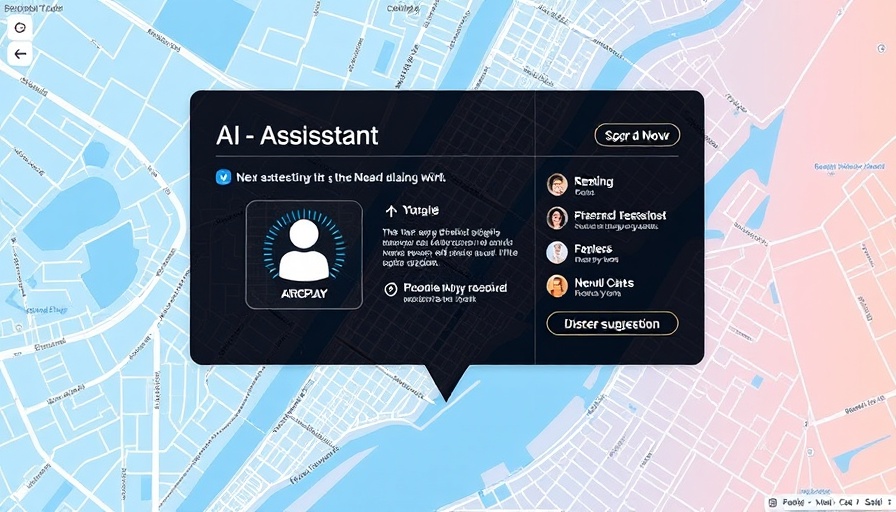
Revolutionizing Mapping with AI
Imagine a world where traditional mapping meets the sophistication of AI technologies. New applications like PamPam combine the functionalities of Google Maps, ChatGPT, and Wikipedia, taking user experience to the next level. PamPam stands out among mapping tools, utilizing artificial intelligence to make collaboration seamless and engaging, shifting how we approach navigation and information sharing.
Why PamPam Stands Out
PamPam isn't just another mapping tool; it serves as a game-changer for anyone looking to infuse creativity into their navigation tasks. By integrating AI suggestions for place descriptions and enhancing the information retrieval process, it helps users craft interactive and visually appealing maps quicker than before. The playful aesthetic not only makes it enjoyable to use but also turns map-making into a format for exploring new tech gems.
Functionalities that Transform Mapping
If you're an AI enthusiast, PamPam offers several features that appeal specifically to your interests, including live collaborative editing, which allows multiple users to contribute to a single map. This is reminiscent of how Google Docs revolutionized document editing.
You can swiftly create maps by importing data from sources like Airtable or Google Sheets, enabling users to visualize concepts without getting bogged down by technical details. The essence of PamPam lies in its ability to merge intuitive design with powerful mapping functionalities.
Emerging Trends in AI Mapping Tools
As AI continues to reshape how we interact with technology, tools like PamPam signal a shift towards Agentic AI—systems that not only process data but proactively assist users in making sense of that information. Furthermore, the increasing utilization of Perplexity AI within mapping platforms suggests a future where digital experiences are crafted from a deeply interconnected web of knowledge.
Personalizing Your Mapping Experience
For users eager to personalize mapping experiences, the interface allows for creative annotations, adding drawings, text, or stickers to maps. Whether you want to mark favorite restaurants, scenic routes, or noteworthy events, PamPam makes these options readily available.
What the Future Holds
The intersection of mapping and AI heralds exciting opportunities, especially for content creators, educators, and casual users alike. As tools continually evolve, engaged users will likely discover innovative applications for local tourism, educational projects, and social gatherings. In a sense, we are just exploring the surface of what is possible with AI-driven mapping technologies.
Conclusion: Embrace the Change
With the launch of PamPam, it’s clear that the future of mapping is bright and filled with potential. Get ahead of the curve and start experimenting with this revolutionary tool. Sign up today to create maps that inspire, connect, and captivate—your next adventure is just a click away!
 Add Row
Add Row  Add
Add 




Write A Comment